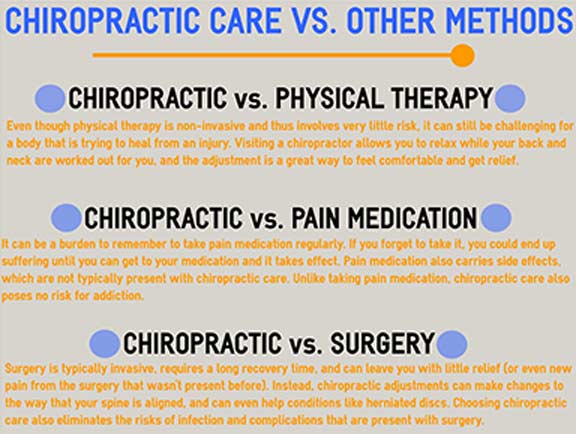Regular Tasks That Contribute To Back Pain And Ways To Prevent Them
Regular Tasks That Contribute To Back Pain And Ways To Prevent Them
Blog Article
Material Composed By-Vega Glud
Keeping appropriate posture and staying clear of common risks in daily tasks can significantly influence your back health and wellness. From how you rest at your desk to exactly how you raise hefty objects, little adjustments can make a huge distinction. Imagine a day without the nagging back pain that hinders your every relocation; the remedy could be simpler than you assume. By making learn this here now to your day-to-day practices, you could be on your way to a pain-free presence.
Poor Stance and Sedentary Way Of Life
Poor position and an inactive way of living are two major contributors to neck and back pain. When you slouch or suspicion over while sitting or standing, you placed unnecessary strain on your back muscles and back. This can cause muscle mass imbalances, tension, and eventually, persistent back pain. Additionally, sitting for long periods without breaks or physical activity can damage your back muscular tissues and lead to stiffness and pain.
To fight poor pose, make an aware effort to rest and stand right with your shoulders back and lined up with your ears. Bear in mind to keep your feet flat on the ground and prevent crossing your legs for prolonged periods.
Including routine stretching and reinforcing exercises into your day-to-day regimen can also assist enhance your stance and relieve neck and back pain connected with a sedentary way of life.
Incorrect Lifting Techniques
Improper lifting strategies can considerably contribute to pain in the back and injuries. When you lift hefty objects, keep in mind to bend your knees and use your legs to raise, as opposed to depending on your back muscle mass. Avoid turning your body while training and maintain the object close to your body to minimize strain on your back. It's critical to maintain a straight back and avoid rounding your shoulders while raising to avoid unnecessary stress on your spinal column.
Constantly assess the weight of the item prior to lifting it. If it's as well hefty, request for assistance or usage tools like a dolly or cart to carry it securely.
Remember to take breaks during raising jobs to provide your back muscles a possibility to relax and stop overexertion. By implementing correct training methods, you can protect against neck and back pain and decrease the threat of injuries, ensuring your back remains healthy and solid for the long term.
Lack of Normal Workout and Extending
A sedentary way of living without regular exercise and stretching can dramatically add to back pain and pain. When you don't participate in exercise, your muscular tissues become weak and inflexible, bring about bad pose and enhanced pressure on your back. Regular exercise assists enhance the muscular tissues that sustain your back, boosting stability and minimizing the threat of pain in the back. Incorporating extending right into your routine can additionally boost flexibility, protecting against tightness and discomfort in your back muscle mass.
To avoid neck and back pain brought on by a lack of exercise and extending, go for at the very least 30 minutes of moderate exercise most days of the week. Consist of exercises that target your core muscle mass, as a strong core can assist alleviate stress on your back.
Furthermore, take breaks to stretch and move throughout the day, especially if you have a workdesk job. Simple stretches like touching your toes or doing shoulder rolls can aid relieve tension and prevent pain in the back. Focusing on routine workout and extending can go a long way in keeping a healthy and balanced back and lowering pain.
find out this here , bear in mind to sit up right, lift with your legs, and remain active to prevent pain in the back. By making straightforward modifications to your everyday practices, you can stay clear of the pain and limitations that include neck and back pain. Take care of your spinal column and muscle mass by exercising great posture, correct training strategies, and normal exercise. Your back will thank you for it!
